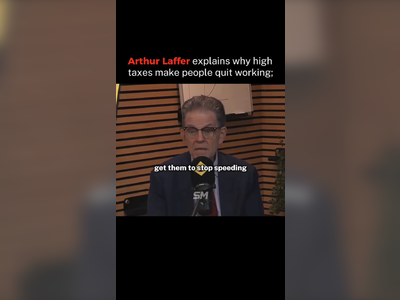
Robust US Job Data Stokes Rate Speculation, Rattles Wall Street
December's strong employment figures spur fears of delayed interest rate cuts, reversing stock market gains
In a surprising turn of events, Wall Street suffered a significant downturn following the release of December's robust employment figures in the United States.
The data has intensified concerns about a potential postponement of anticipated interest rate cuts.
The Dow Jones Industrial Average fell by 1.6% to close at 41,938.
This decline was mirrored in the NASDAQ Composite, which also fell by 1.6% to 19,161, and the S&P 500, which dropped by 1.5% to 5,827, reflecting a broad market impact.
The labor market report revealed an unexpected increase of 256,000 new non-farm jobs, significantly surpassing the 160,000 that economists had forecasted in a Reuters survey.
This robust job growth has cast doubt on the likelihood of rate cuts that many traders had anticipated as a near-term relief.
Robert Pavlik, a portfolio manager at Dakota Wealth, highlighted the market's need for reassurance in the form of lower interest rates, which now seem less probable in light of this data.
Federal Reserve policymakers had already signaled caution regarding rate adjustments, emphasizing the uncertainty surrounding the US economy's trajectory, especially under the still developing trade policies of the incoming administration under President Donald Trump.
The unexpected strength in the labor market, compounded by persistent inflation risks, is expected to play a crucial role in shaping the Federal Reserve's monetary policy decisions moving forward.
The Wall Street downturn was accompanied by a surge in the US dollar.
The Dollar Index rose nearly half a percent to reach 109.58, its highest point in two years, driven by increasing investor apprehensions regarding interest rates.
Meanwhile, the euro weakened by half a percent, inching closer to parity with the US currency at $1.0245.
Yields on US Treasury bonds also responded to the employment figures, with the ten-year yield climbing to 4.751%, up from Thursday's 4.680%, marking its highest level since November 2023.
This bond market movement underscores heightened expectations for interest rate stability rather than cuts.
Simultaneously, the oil market saw a price increase, with Brent crude and West Texas Intermediate both rising by three percent.
This surge was propelled by greater demand for heating fuel amid cold winter conditions in the US and Europe, alongside expectations of stringent US policies on the Russian oil sector, potentially affecting supply chains.
In terms of individual sectors, insurance companies felt downward pressure in the wake of reports estimating that damages from wildfires around Los Angeles could amount to $20 billion, potentially the most costly in California's history.
Mercury General saw shares plummet nearly 20%, while other insurers such as Allstate, Travelers, and Chubb experienced losses between three and six percent.
Conversely, Walgreens Boots Alliance experienced a share price increase of over 27% following favorable earnings reports.
Energy firm Constellation Energy enjoyed a similar uptrend, with its stock rising 25% after announcing a $26.6 billion acquisition of power producer Calpine.
The fashion industry saw heightened activity, as Capri Holdings' shares rose by ten percent amid media speculation about Prada's interest in acquiring Versace, lifting the parent company's stock.
In the aviation sector, Delta Air Lines' stock surged by nine percent, buoyed by the airline's projection of a historic $7.35 per-share profit for the year 2025.
Today’s market developments underscore a complex economic landscape where both domestic economic indicators and international geopolitical uncertainties necessitate cautious navigation by investors.
The data has intensified concerns about a potential postponement of anticipated interest rate cuts.
The Dow Jones Industrial Average fell by 1.6% to close at 41,938.
This decline was mirrored in the NASDAQ Composite, which also fell by 1.6% to 19,161, and the S&P 500, which dropped by 1.5% to 5,827, reflecting a broad market impact.
The labor market report revealed an unexpected increase of 256,000 new non-farm jobs, significantly surpassing the 160,000 that economists had forecasted in a Reuters survey.
This robust job growth has cast doubt on the likelihood of rate cuts that many traders had anticipated as a near-term relief.
Robert Pavlik, a portfolio manager at Dakota Wealth, highlighted the market's need for reassurance in the form of lower interest rates, which now seem less probable in light of this data.
Federal Reserve policymakers had already signaled caution regarding rate adjustments, emphasizing the uncertainty surrounding the US economy's trajectory, especially under the still developing trade policies of the incoming administration under President Donald Trump.
The unexpected strength in the labor market, compounded by persistent inflation risks, is expected to play a crucial role in shaping the Federal Reserve's monetary policy decisions moving forward.
The Wall Street downturn was accompanied by a surge in the US dollar.
The Dollar Index rose nearly half a percent to reach 109.58, its highest point in two years, driven by increasing investor apprehensions regarding interest rates.
Meanwhile, the euro weakened by half a percent, inching closer to parity with the US currency at $1.0245.
Yields on US Treasury bonds also responded to the employment figures, with the ten-year yield climbing to 4.751%, up from Thursday's 4.680%, marking its highest level since November 2023.
This bond market movement underscores heightened expectations for interest rate stability rather than cuts.
Simultaneously, the oil market saw a price increase, with Brent crude and West Texas Intermediate both rising by three percent.
This surge was propelled by greater demand for heating fuel amid cold winter conditions in the US and Europe, alongside expectations of stringent US policies on the Russian oil sector, potentially affecting supply chains.
In terms of individual sectors, insurance companies felt downward pressure in the wake of reports estimating that damages from wildfires around Los Angeles could amount to $20 billion, potentially the most costly in California's history.
Mercury General saw shares plummet nearly 20%, while other insurers such as Allstate, Travelers, and Chubb experienced losses between three and six percent.
Conversely, Walgreens Boots Alliance experienced a share price increase of over 27% following favorable earnings reports.
Energy firm Constellation Energy enjoyed a similar uptrend, with its stock rising 25% after announcing a $26.6 billion acquisition of power producer Calpine.
The fashion industry saw heightened activity, as Capri Holdings' shares rose by ten percent amid media speculation about Prada's interest in acquiring Versace, lifting the parent company's stock.
In the aviation sector, Delta Air Lines' stock surged by nine percent, buoyed by the airline's projection of a historic $7.35 per-share profit for the year 2025.
Today’s market developments underscore a complex economic landscape where both domestic economic indicators and international geopolitical uncertainties necessitate cautious navigation by investors.
AI Disclaimer: An advanced artificial intelligence (AI) system generated the content of this page on its own. This innovative technology conducts extensive research from a variety of reliable sources, performs rigorous fact-checking and verification, cleans up and balances biased or manipulated content, and presents a minimal factual summary that is just enough yet essential for you to function as an informed and educated citizen. Please keep in mind, however, that this system is an evolving technology, and as a result, the article may contain accidental inaccuracies or errors. We urge you to help us improve our site by reporting any inaccuracies you find using the "Contact Us" link at the bottom of this page. Your helpful feedback helps us improve our system and deliver more precise content. When you find an article of interest here, please look for the full and extensive coverage of this topic in traditional news sources, as they are written by professional journalists that we try to support, not replace. We appreciate your understanding and assistance.











